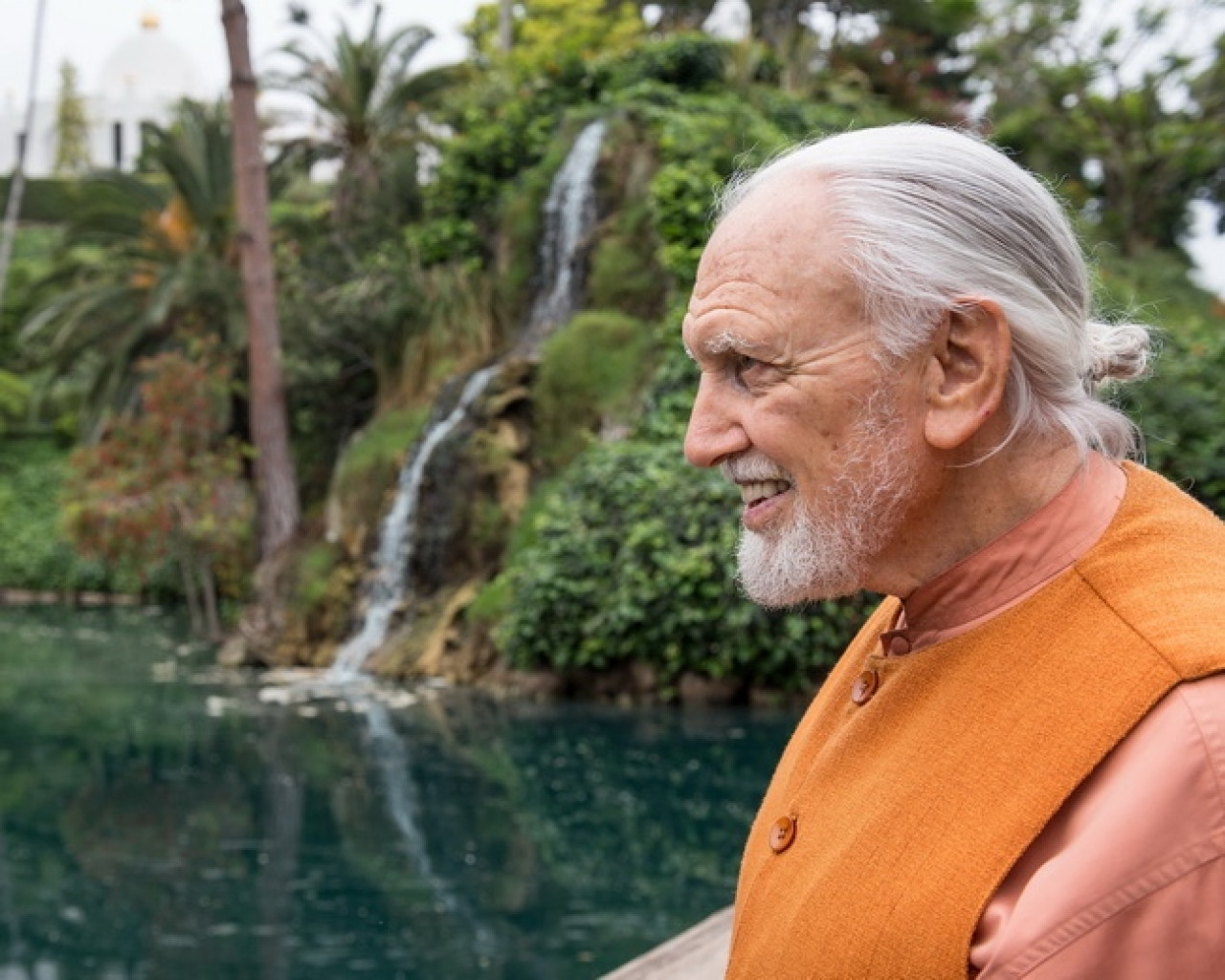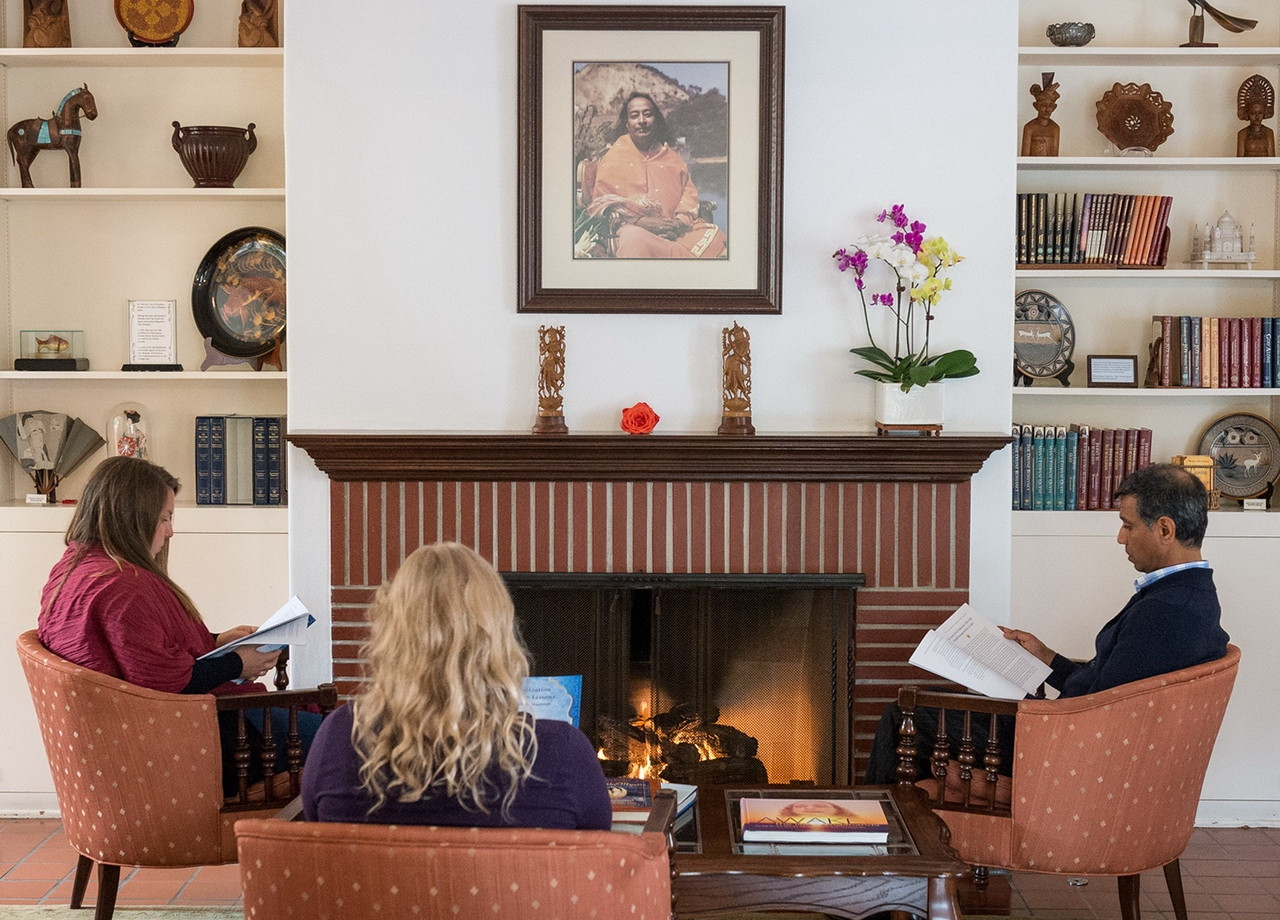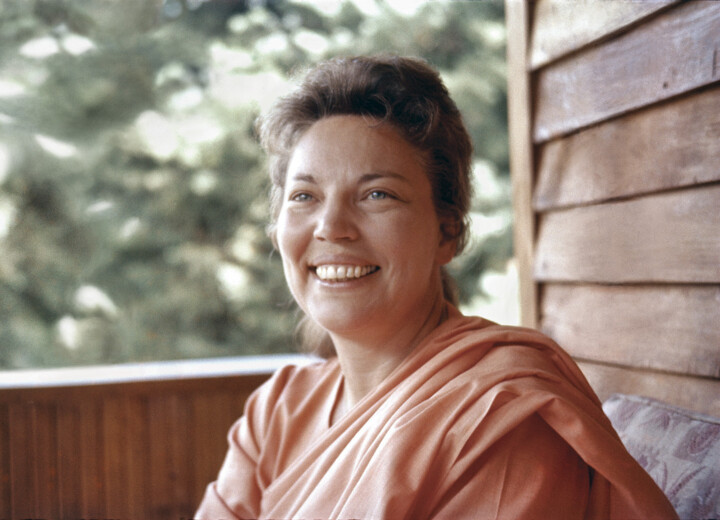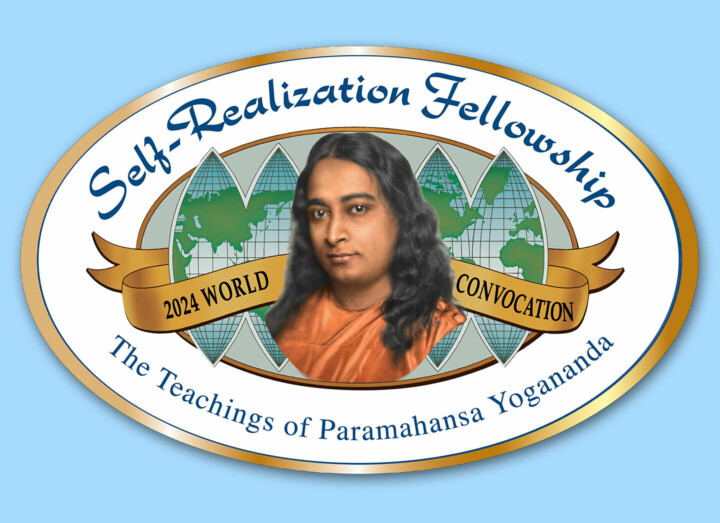Meditation — An Ancient Panacea for Our Modern-Day Challenges
An Interview With Brother Achalananda
Part 3

(This is the last in a three-part series.)
Interviewer: Are the SRF teachings of Raja Yoga in harmony with the Yoga Sutras of Patanjali?
BA: Yes. Raja Yoga is expounded in the Yoga Sutras of Patanjali, and of course the SRF meditation techniques — of which the highest is Kriya Yoga — are techniques of Raja Yoga. So our teachings include all the steps of Patanjali’s Eightfold Path of Yoga. The first two steps on this path are yama-niyama: avoiding wrong actions and performing right actions.
And then you have the third step, which is asana or correct posture. You have to learn to maintain a good posture if you want to meditate. Yogananda taught that people in general should pay more attention to their posture. Most people today, when they sit down they slump; they don’t sit erect, which is not a good posture.
Next, beyond asana, you have pranayama techniques of meditation. Pranayama means control of the life force in the body. Beyond that you have pratyahara, which means to reach a state in which the mind is interiorized, disconnected from the sensations of the body. In this state we gain some control over the mind, so we can go deeper into a state of meditation.
And then we go into the final three stages, which are dharana, dhyana, and samadhi. Dharana means concentration — focusing the mind wholly on one point or object (especially, in the context of meditation, on some manifestation of God or Truth). Dhyana means true meditation, which is the state in which the meditator’s consciousness expands in perception of the Divine — for example, experiencing the sacred vibration of Aum pervading all creation. And lastly samadhi, meaning actual oneness with the object of meditation — union between the soul of the meditator and Spirit, which is our Source.
Those are the basic steps in Patanjali’s Eightfold Path. To state them is one thing, but to experience them all takes a lot of practice. You just have to keep after it. How many people can sit down and keep their mind focused on one thing for a long period of time? The mind wanders: That’s the first thing you realize when you start to meditate. So, you have to learn how to concentrate. You have to learn how to truly meditate.
It’s very helpful to have an intellectual understanding of the different aspects of Raja Yoga. To completely expound Patanjali’s Yoga would require a very thick book. But what’s most important is to put the steps into practice through methods such as are taught in the SRF Lessons. When you start to practice meditation and you have your first experience of mental interiorization, suddenly you realize: “Oh, this makes me feel better. This makes me calmer.” You begin to realize what the practice of meditation does for you.
The mind wanders: That’s the first thing you realize when you start to meditate. So, you have to learn how to concentrate.
Sometimes people have spiritual experiences when they first start practicing meditation, or even if they aren’t practicing meditation, and this is because they’ve meditated before in previous lives.
One night when I was about eight years old, I was in bed and starting to fall asleep when I saw a brilliant point of white light here at the spiritual eye in the forehead. And I became completely engrossed in just looking at it. And as I was looking at it, it kept getting bigger and bigger and bigger, and I kept feeling heavier and heavier and heavier. And then, finally, I got a strange metallic taste in my mouth and felt I was about to fall into the light, when suddenly I came out of it. I ran into my parents’ bedroom and woke my mother and tried to explain to her what happened to me. Poor thing, she didn’t have a clue and she just said, “Oh you’re just having a nightmare. Go back and go to sleep.” So like a good little boy I trudged back and went to sleep. The next night, same thing happened, and again every night after that for about a week. Then it stopped, and I actually forgot all about it until many years later, after I came on the SRF path, when I remembered it and realized that this was not the first life in which I had attempted meditation.
Experiences such as this come to us as we persevere in meditation over the years and can help to encourage us. Yet even if right away we don’t see the spiritual eye or have the other spiritual experiences that Paramahansaji describes in the SRF Lessons, we shouldn’t be discouraged and think we aren’t making any progress. As long as we are making a sincere effort every day, there is no doubt that we are changing for the better, and that’s what is most important.

I: What would you say to someone who is looking for a path and trying to decide if the SRF teachings are for them?
BA: Well, the best way I would suggest is to read the Autobiography of Yogi or another book by Yogananda. Where There Is Light is a book that provides a wonderful general introduction to the topics and practices that are covered in the SRF teachings. And then if you’re interested in going further, I highly recommend taking the SRF Lessons. The Lessons present not only Yogananda’s techniques of meditation (which, as I said earlier, are Raja Yoga techniques) but also his deep expositions on many, many aspects of yoga.
And if you’re not interested, well, no problem! Keep on with your search for a path, and wherever you go, you’ll go with our blessings. SRF doesn’t claim to be the only path back to God. I personally think it’s the best path back, but it’s not the only path back. But if you give it a sincere try, and approach it with a receptive heart and mind, I think you’ll find you experience at least some benefits — and you might even find, as I did, that they transform your life.
Yogananda once said, “No one who comes to me with an open mind and spiritual recipiency shall go away without some perception of God.” He had no wish to make followers personally loyal to him. His only desire was to awaken God in people’s hearts, to help them find lasting happiness. And that’s the purpose that still motivates us in SRF today.





Leave a comment